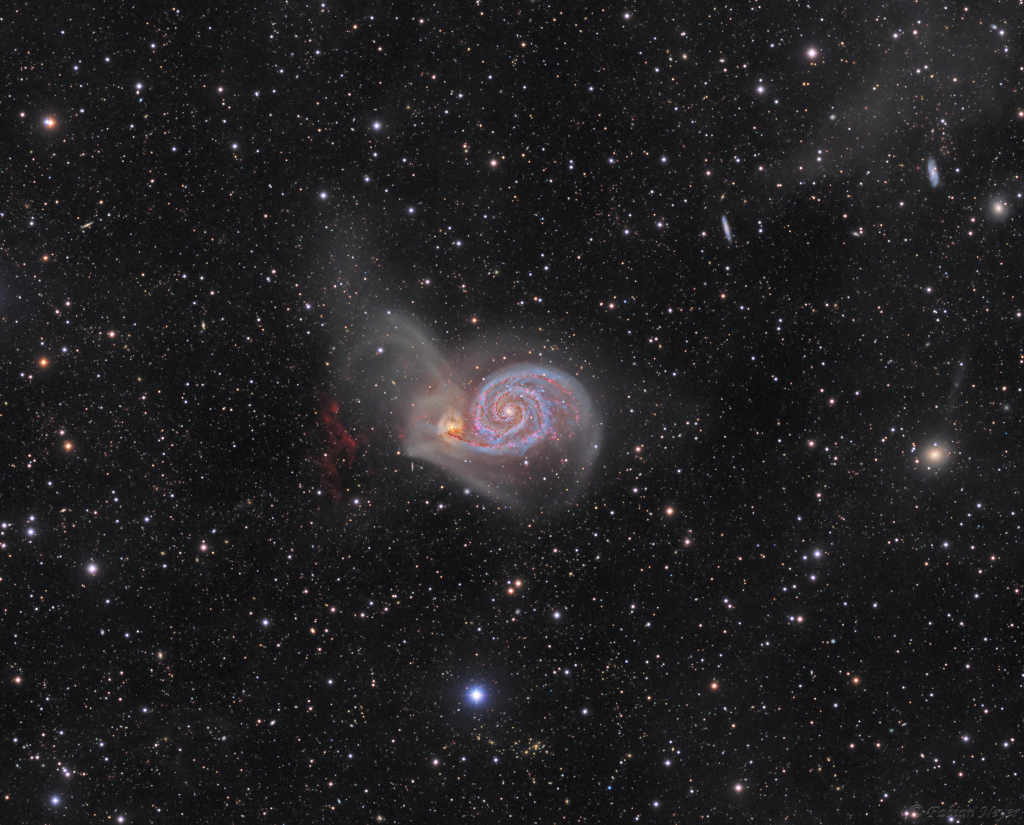2022年9月2日
M51: The Whirlpool Galaxy
Image Credit & Copyright: Fabian Neyer
Explanation: Find the Big Dipper and follow the handle away from the dipper’s bowl until you get to the last bright star. Then, just slide your telescope a little south and west and you’ll come upon this stunning pair of interacting galaxies, the 51st entry in Charles Messier’s famous catalog. Perhaps the original spiral nebula, the large galaxy with well defined spiral structure is also cataloged as NGC 5194. Its spiral arms and dust lanes clearly sweep in front of its companion galaxy (left), NGC 5195. The pair are about 31 million light-years distant and officially lie within the angular boundaries of the small constellation Canes Venatici. In direct telescopic views, M51 looks faint and fuzzy to the eye. But this remarkably deep image shows off details of the interacting galaxy’s striking colors and galactic tidal debris. The image includes nearly 90 hours of narrowband data that also reveals a vast glowing cloud of reddish ionized hydrogen gas discovered in the M51 system.
Tomorrow’s picture: 29 seconds later
M51:涡状星系
影像提供与版权: Fabian Neyer
说明: 先找到北斗七星,然后顺着斗柄往远离斗杓的方向移动,到了斗柄最末端的亮星(摇光)停住,再把望远镜略微向西南方移动,你就能看见这对很美丽的相互作用星系——著名梅西耶星表的第五十一号天体。星系对中的大星系(亦名为NGC 5194)有很鲜明的螺旋结构,而它可能是人类发现的第一个”螺旋星云“。它的螺旋臂和尘埃带,很明显的拂过伴星系NGC 5195(左)的前方。位在小小的边界之内的这对星系,离我们约有3千1百万光年远。虽然在肉眼中,M51看起来既暗又模糊,但在上面这幅深空影像里,可清楚见到这对相互作用星系令人屏息的色彩和星系潮汐碎片。这幅整合了将近90小时窄波段数据的影像,也清楚呈现了M51系统里大量会散发泛红辉光的电离氢云。
明日的图片: 29 seconds later



